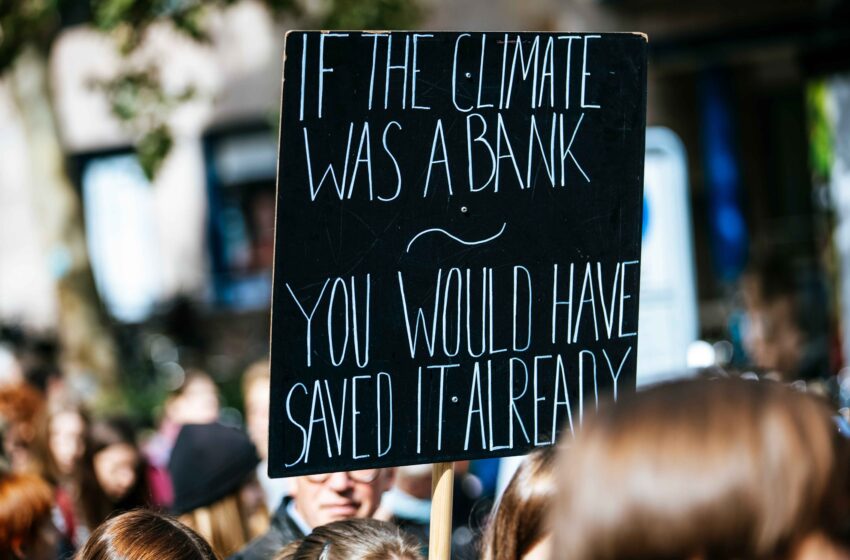
When the Weather Turns Risky: How Climate Change Became a Central Concern for Global Finance
As temperatures rise and storms grow stronger, climate change is no longer just an environmental issue—it’s a material financial risk. Wall Street, central banks, and insurers are rewriting their risk playbooks to keep up with a warming world.
A decade ago, most CFOs wouldn’t have thought to include sea-level rise or wildfire frequency in their risk matrices. Now, they can’t afford not to.
Climate change has made its way into boardrooms, regulatory memos, and even central bank simulations. Not as an afterthought or a PR-friendly CSR initiative—but as a core threat to financial stability. “Climate risk is financial risk,” as BlackRock CEO Larry Fink famously wrote in his 2020 annual letter. That phrase, once controversial, now feels inevitable.
According to a 2023 study by the Network for Greening the Financial System (NGFS), 38 central banks across five continents have begun integrating climate scenarios into their supervisory frameworks. Stress testing, traditionally reserved for economic shocks, pandemics, or liquidity crises, now includes carbon pricing, drought projections, and transition risks. The European Central Bank’s (ECB) 2022 climate stress test covered 104 banks and found that most had not yet fully integrated climate into their risk models. Yet the losses projected from both physical risks (such as floods) and transition risks (like carbon taxes) were “material and systemic.”
The Federal Reserve, for its part, has been more cautious but not inactive. In 2023, it launched its first-ever pilot climate scenario analysis involving six major U.S. banks. The focus wasn’t to penalize or regulate, but to understand: What would happen to banks’ balance sheets under different climate futures? A world that limits global warming to 1.5°C looks very different, economically speaking, than one that doesn’t.
The data is sobering. A 2022 IMF working paper estimated that the value at risk (VaR) from climate-related financial instability could reach up to 10% of global GDP by 2100 under a high-emission scenario. And while 2100 feels far away, capital markets discount future risk today.
There are real-world examples that bring this abstraction into sharp relief. In 2018, PG&E Corporation filed for bankruptcy after California wildfires, likely worsened by climate change, left it with more than $30 billion in liabilities. Investors learned the hard way: environmental degradation can trigger bond downgrades, stock plunges, and regulatory crackdowns.
Insurers are also sounding the alarm. According to Swiss Re’s 2024 Climate Risk Index, insured natural catastrophe losses topped $120 billion in 2023 alone, with climate change increasing the severity and frequency of extreme events. “The new normal of weather extremes is reshaping how we underwrite risk,” said Jerome Haegeli, Chief Economist at Swiss Re.
Markets, too, are beginning to price in these risks. Climate Value-at-Risk (CVaR) has emerged as a key metric for investment funds evaluating portfolio exposure. MSCI’s 2023 ESG and Climate Trends report revealed that more than 60% of institutional investors globally now request climate risk disclosure from companies they invest in. That includes transition risks from policies like the EU’s Carbon Border Adjustment Mechanism or the SEC’s proposed climate disclosure rule—still under fierce debate in the U.S. but expected to pass in some form.
Then there’s the human factor: migration due to water scarcity, heatwaves, or agricultural collapse could shift labor markets and consumer behavior. The World Bank estimates that by 2050, over 216 million people could become internal climate migrants. The economic implications ripple outward—affecting housing, wages, municipal budgets, and beyond.
What’s clear is that climate change has moved from the margins to the mainstream of financial strategy. Not only are central banks including climate stress tests in their toolkits, but asset managers, insurers, and even municipal planners are doing the same. The Bank of England, a pioneer in this area, stated in 2021 that “climate-related financial risks will become persistent, forward-looking, and system-wide.”
Despite the progress, we’re still early in understanding the full spectrum of financial implications. Much of the modeling relies on imperfect data or assumptions that don’t capture the full non-linearity of climate events. As Robert Litterman, former head of risk management at Goldman Sachs, put it: “The risk is not gradual—it’s systemic, and we don’t know how to price it yet.”
But we’re trying. And perhaps that’s the point. Finance, with all its flaws and limitations, is waking up to climate as a present—not future—threat. Markets may be slow, but they are not blind.
Sources:
Network for Greening the Financial System (NGFS), “Climate Scenarios Database,” 2023
European Central Bank, “2022 Climate Risk Stress Test Results”
Federal Reserve Board, “Pilot Climate Scenario Analysis,” 2023
IMF Working Paper, “Climate-Related Financial Stability Risks,” WP/22/13
Swiss Re, “Climate Risk Index 2024”
MSCI, “2023 ESG & Climate Trends to Watch”
World Bank, “Groundswell: Preparing for Internal Climate Migration,” 2021
BlackRock CEO Larry Fink’s Letter to CEOs, 2020






